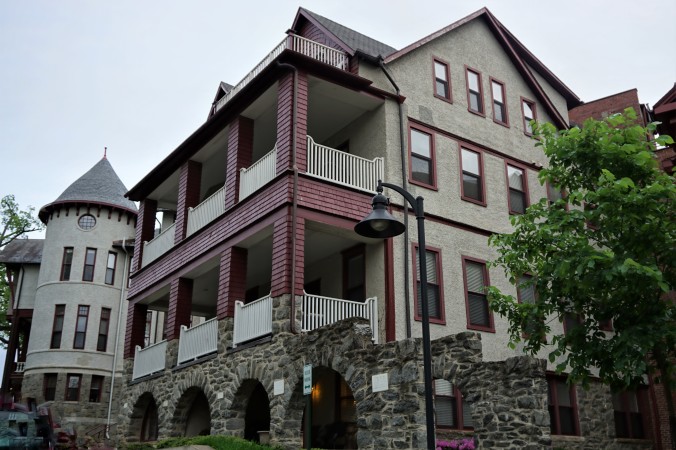This was originally posted on Retrieving the Past, the internship blog of the University of Maryland Baltimore County (UMBC) history department on November 18, 2016. You can read my other post about this same internship here.
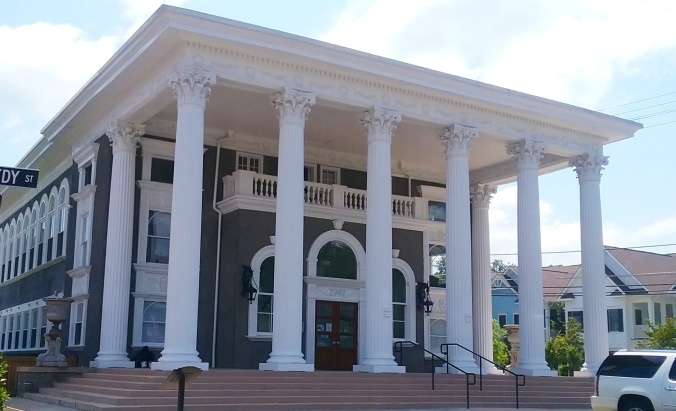
The newly renovated Greek Revival gymnasium, which now houses condominium units, greets visitors when they enter the National Park Seminary historic district. Not too long ago, the magnificent building was decaying from neglect. (Rebecca Gale)
As I relayed in my last post, I have been completing an internship with the historic preservation nonprofit Save Our Seminary (SOS), based in Forest Glen, MD, which is responsible for the rescue and restoration of the historic National Park Seminary campus. SOS maintains an archive of objects important to the seminary’s history, and I’ve had the chance to aid with organizing parts of the collection to make it more accessible.
While my first task was filing slides in archivally safe sleeves, my second project was sorting and filing an extensive set of photos depicting the gradual decay and long-awaited restoration of the historic buildings over the course of two decades. The bulk of the photos were taken by my internship supervisor, a historic preservationist and the executive director of SOS, who has been documenting the state of the campus since before most of us undergraduates were even in existence.
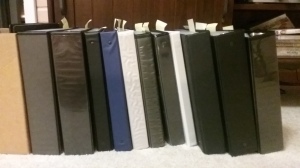
- The end result of my project, two and a half feet of binders featuring hundreds of photos. Each binder focuses on a different building or sculpture, with photos placed in chronological order to show change over time.
This collection has amounted to hundreds of photos and dates back to 1990. My job has been to sort photos into categories based on what building or object is pictured and place them into archival sleeves in chronological order so that it will be easy to trace the development of each building over time. Going through the photos has been fascinating, and their existence is a testament to the dedication of people who care about the stories that historic spaces tell, even when they no longer showcase their beauty as originally intended. I remember driving past the seminary campus when it was a tangle of weeds; it’s easy to forget the horrific state of the place looking at its pristine, glowing stucco today.
Here is a series of three photos from the collection, depicting the restoration of part of what was a dorm building when National Park Seminary was a school:
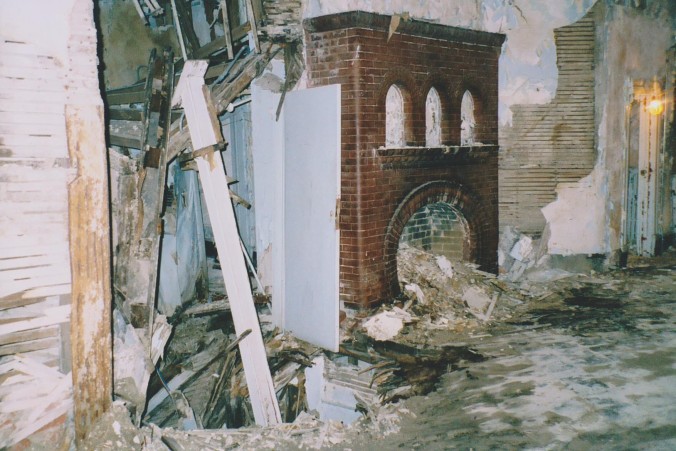
Decay like this was common in almost all the buildings on campus in the 1990s while the US Army still owned the property but was no longer using or maintaining the buildings. (Photo by Bonnie Rosenthal, courtesy of Save Our Seminary)
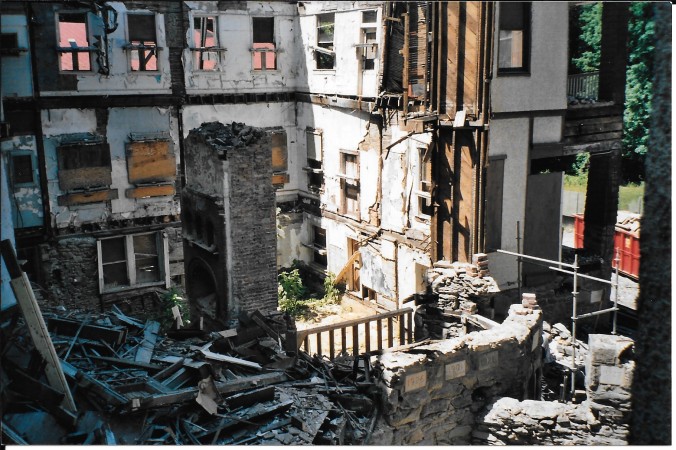
This photo from June 2007 shows the demolition phase of reconstruction. Some of the floors of this particular building had collapsed on each other and had to be torn out and rebuilt. Note the fireplace pictured above is still standing in the middle of the building. (Bonnie Rosenthal, Save Our Seminary)
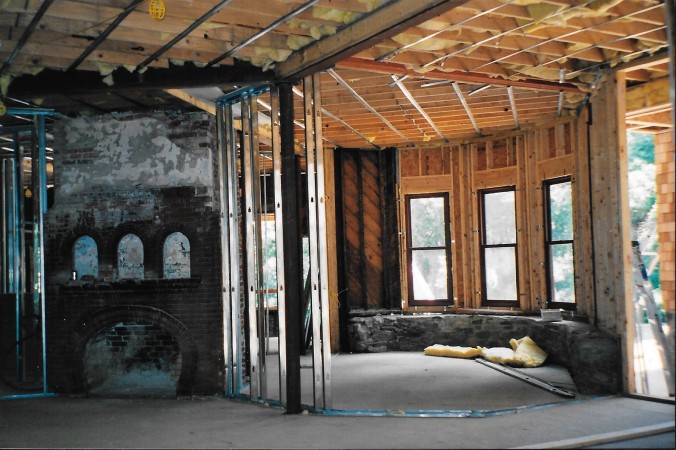
A year later in 2008, you can see the progress that has been made reconstructing the floors and walls while maintaining the fireplace and historic stonework, on its way to becoming a unique historic condominium building. (Bonnie Rosenthal, Save Our Seminary)
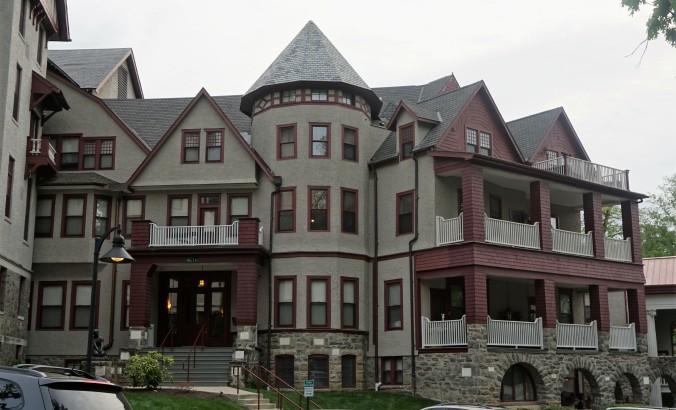
The exterior of the restored building today. (Photo by Rebecca Gale)
This photo collection is a reminder of the victory that has been won in saving one American treasure and restoring it to life. Whenever I set foot on the seminary campus now, I think back to the mind-boggling images of decay – floors falling down, entire walls sagging, stones buckling, roofs caving in, fires being put out – and my heart warms to see a dream realized in front of me, the dream of a group of people committed to a place that spoke to them. The seminary is a reminder to keep fighting for the preservation of historic places because their story deserves to be told and they are meant to be a site of life once again.
